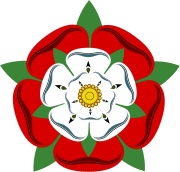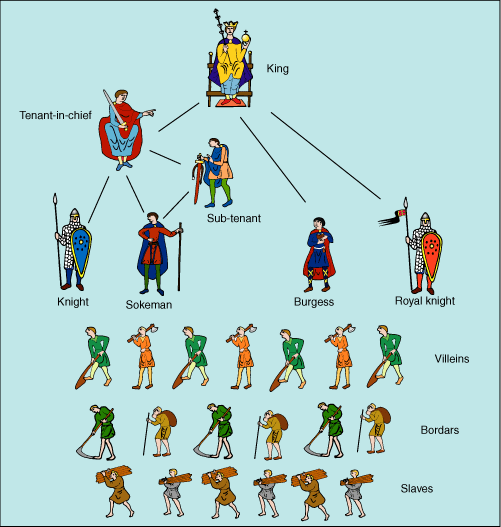Class 7. England from 1066 to 1485
Norman England (1066-1154)
In 1066, William of Normandy invaded the Kingdom of England, defeated Anglo-Saxon King Harold of England and within several subsequent years secured his rule of England. Among the most important results you should know those listed below:
(1) a new French-speaking ruling class replaced old Anglo-Saxon nobility, bringing a new language, new habits and customs, new laws, etc.;
(2) Scandinavian influence disappeared. Instead, England was involved in the continental politics, paving a way to its centuries-long rivalry with France for the dominance in the Western Europe;
(3) Normans later conquered Wales and Ireland, and through inter-ethnic marriages penetrated into the Scottish aristocracy, which led to stronger ties within the British Isles.
(4) Normans introduced a system of feudal relations onto the English soil, which intensified the social development of England.
England itself was at first only one part of the Norman posessions in Europe and the Middle Asia:
With the arrival of Normans, the structure of the English society became typically feudal:
Important events: The Battle of Hastings
Key terms and notions: Bayeux Tapestry, the Old Norman (Anglo-Norman) language, feudalism
Key figures: William the Conqueror
The House of Plantagenet (1154-1485)
The long rule of the House of Plantagenet in England was marked by a number of very important events and changes, including the loss of French territories, the graduale shift from the Norman to the English language, the emergence of the new English identity from two different Anglo-Norman and Anglo-Saxon identities, the Magna Carta, and the social evolution of the English society.
King Henry II of England
Ruled in 1154–1189. A successful king who was able to control his posessions despite claims from Scotland and France.
Richard the Lionheart
Ruled in 1189-1199. Famous for his participation in the Crusades, was absent from England throughout the almost entire course of his reign. An iconic figure in the English folklore.
King John
Ruled in 1199-1216. A weak king who was forced by the English barons to seal Magna Carta, a document which restricted the power of king and is generally considered the first step to the parliamentary monarchy in England. No members of the English royal families were named John ever after.
The Hundred Years' War (1337-1453)
A war between the English House of Plantagenet and the French House of Valois. Both houses were claimants to the French throne. After initial successes of the Plantagenets, the House of Valois expelled them from the majority of France. By the end of the war, it could be transformed from a dynastic conflict into an Anglo-French war, as English and French identities formed during the course of the war.
The Battle of Crécy (1346), the Battle of Poitiers (1356) and the Battle of Agincourt (1415) - three major English victories during the Hundred Years' War. Despite these, the French were finally victorious.
Dynastic dispute within the House of Plantagenet
The 15th century saw the rivalry of two so-called cadet branches (junior branches) of the House of Plantagenet, namely between the House of Lancaster and the House of York. It culminated in the War of the Roses during the second half of the century.
King Henry V (1413-1422)
A king of England who is best known for his military victories in the Hundred Years' War. He was able to defeat the French so completely that in 1420 he was recognised as the heir to the French throne after the death of the current French king. The unification of the English and French crowns was destroyed by his premature death. If he had lived only two months more, he would have been crowned the King of France. A character in several Shakespeare's plays.
War of the Roses (1455-1485)
A civil war between two rival houses of Lancaster and York. Named after the symbols of the houses: white rose of York and red rose of Lancaster. Resulted in the weakening of the English nobility and rise of the merchant class, which effectively modernised the English society, which is the reason why the War of the Roses is considered as a transition from the Middle Ages to the English Renaissance.
The war ended when Henry Tudor, a distant member of the House of Lancaster, defeated the forces of Richard III from the House of York. In order to eliminate the rivalry between the houses, Henry Tudor (since 1485 - Henry VII) married Elizabeth of York and merged the symbols of the war - white and red roses - into a new emblem of the Tudor Rose.

Important events: 1215 (Magna Carta), the early 13th century (origins of the Parliament), the Hundred-Years War (1337-1453), the War of the Roses (1455-1485).
Key terms and notions: Magna Carta, rights of the Parliament
Key figures: Henry II, Thomas Becket, Richard I (Richard the Lionheart), King John, Henry V.

